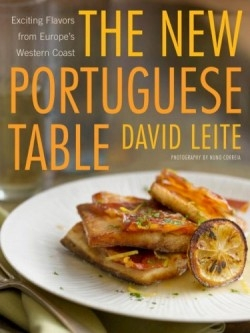The New Portuguese Table
Exciting Flavors from Europe's Western Coast
In his introduction, David Leite describes his years of ambivalence with twenty-first-century Portugal, a country seemingly unhinged from his parent’s romanticized image. Leite’s travels in Lisbon, Porto, and afield, were always tainted by modernity, by a sense of lost innocence. Not until a boisterous dinner around a friend’s kitchen table, eating an adapted Portuguese classic of partridge escabeche nuanced with Indian and Asian spices, did he have his aha! experience. “At that moment it was clear to me what I had to do: embrace this meal, this dining scene, this Portugal. Just because the Portuguese pantry and table had changed since my father left in 1958 didn’t mean Portugal was any less authentic….I now, it seemed, had twice as much to learn, see, and eat. Discovering the similarities and differences between classic and contemporary dishes obsessed me.”
A three-time James Beard Award-winner for his food writing, Leite opens with a chapter titled “Portugal Parsed,” superbly describing each of the country’s thirteen historical regions, including detail on the local foods and wines. His section on the Portuguese pantry provides a primer on the meats, cheeses, beans, seafood, vegetables, herbs, spices, and other ingredients unique to the nation’s cooking. What can readers expect recipe-wise? A great many dishes surprising in their Portuguese distinctness. As a country bordering the Mediterranean and the Atlantic, Portugal brings something new to the table with an unpretentious satisfaction component sure to gain in popularity here in the United States.
Reviewed by
Matt Sutherland
Disclosure: This article is not an endorsement, but a review. The publisher of this book provided free copies of the book to have their book reviewed by a professional reviewer. No fee was paid by the publisher for this review. Foreword Reviews only recommends books that we love. Foreword Magazine, Inc. is disclosing this in accordance with the Federal Trade Commission’s 16 CFR, Part 255.

